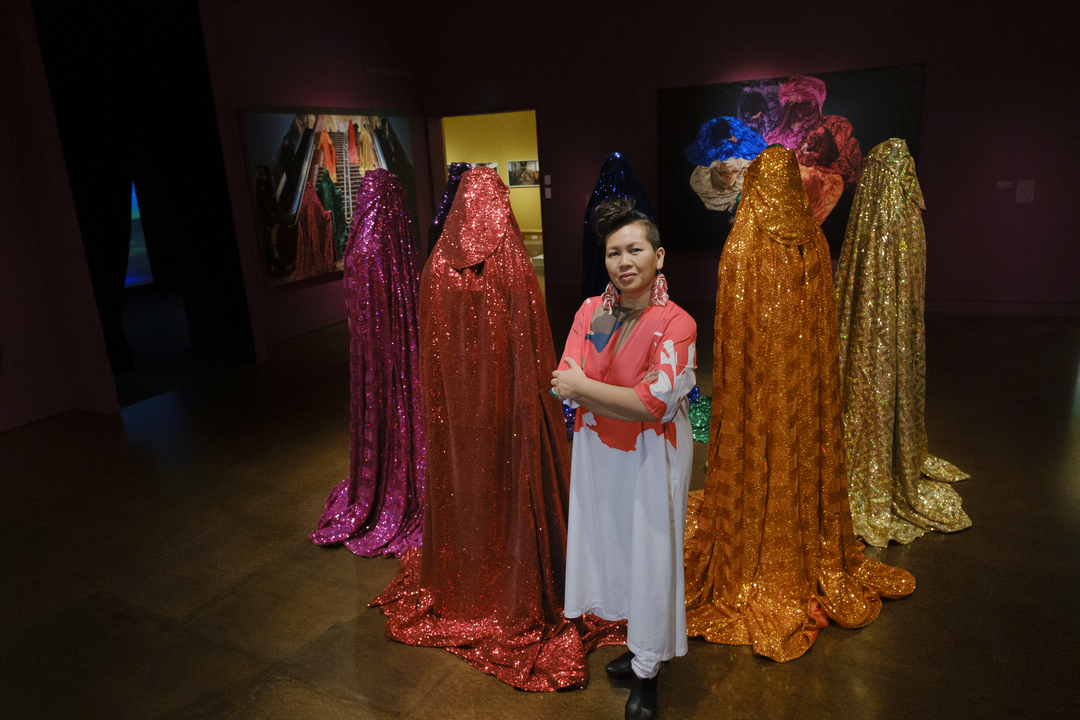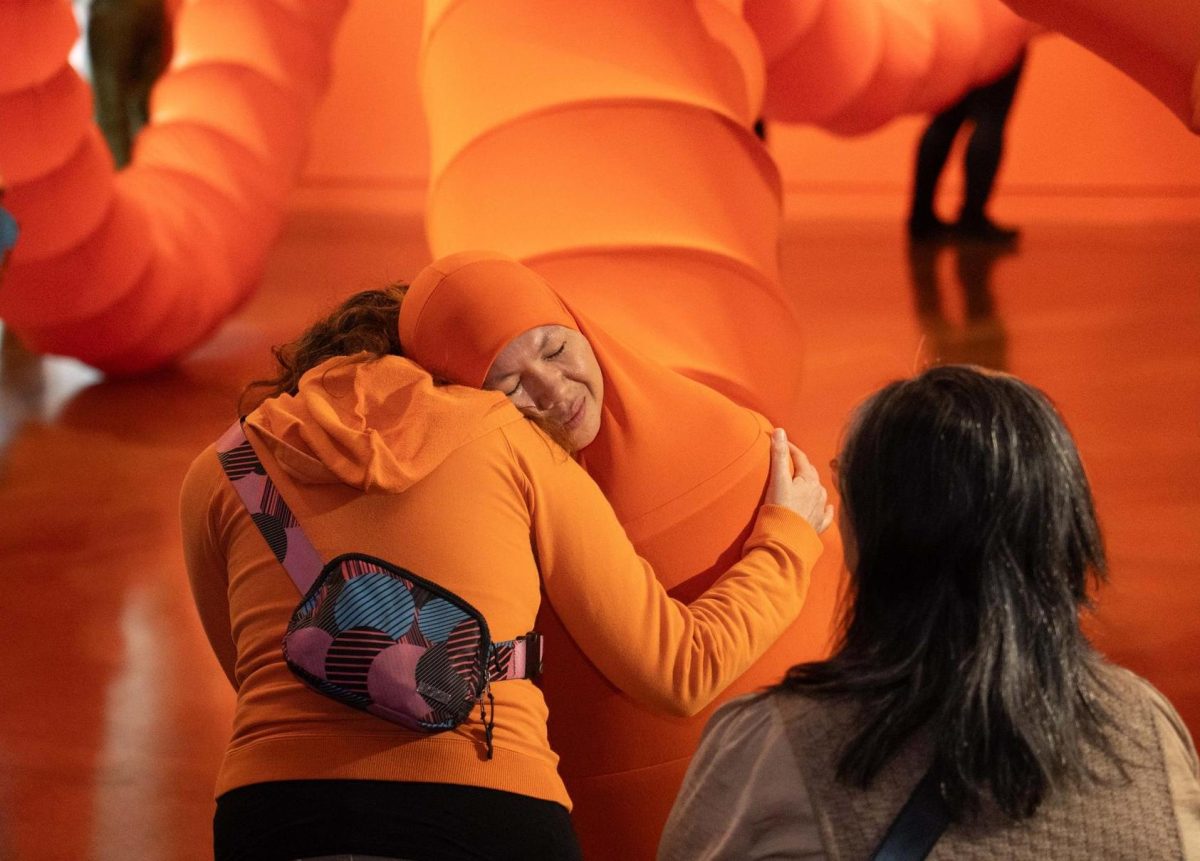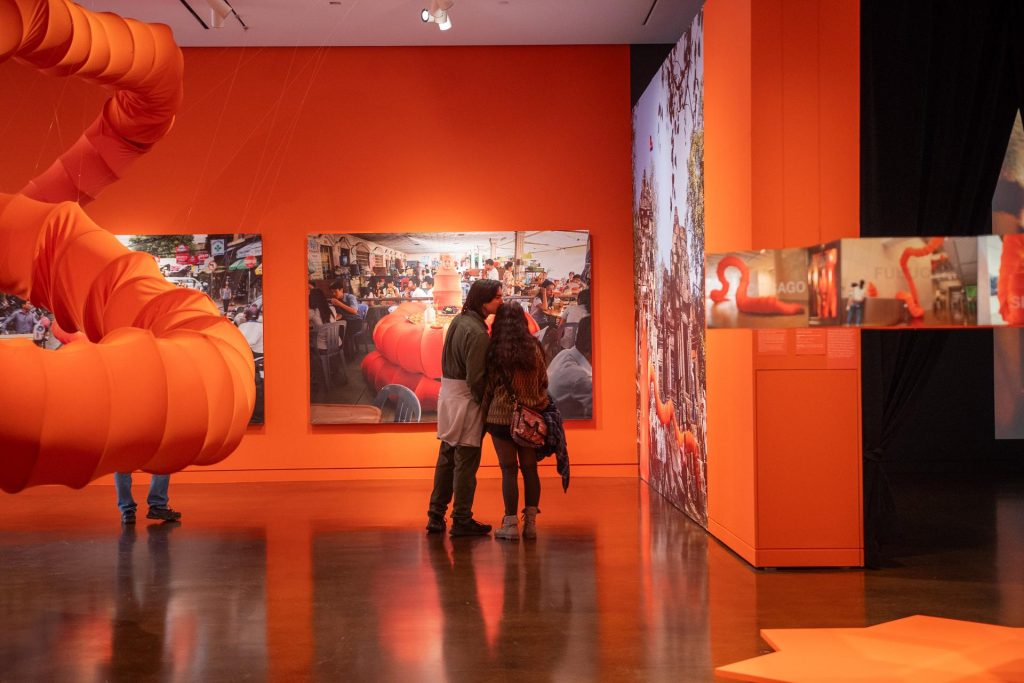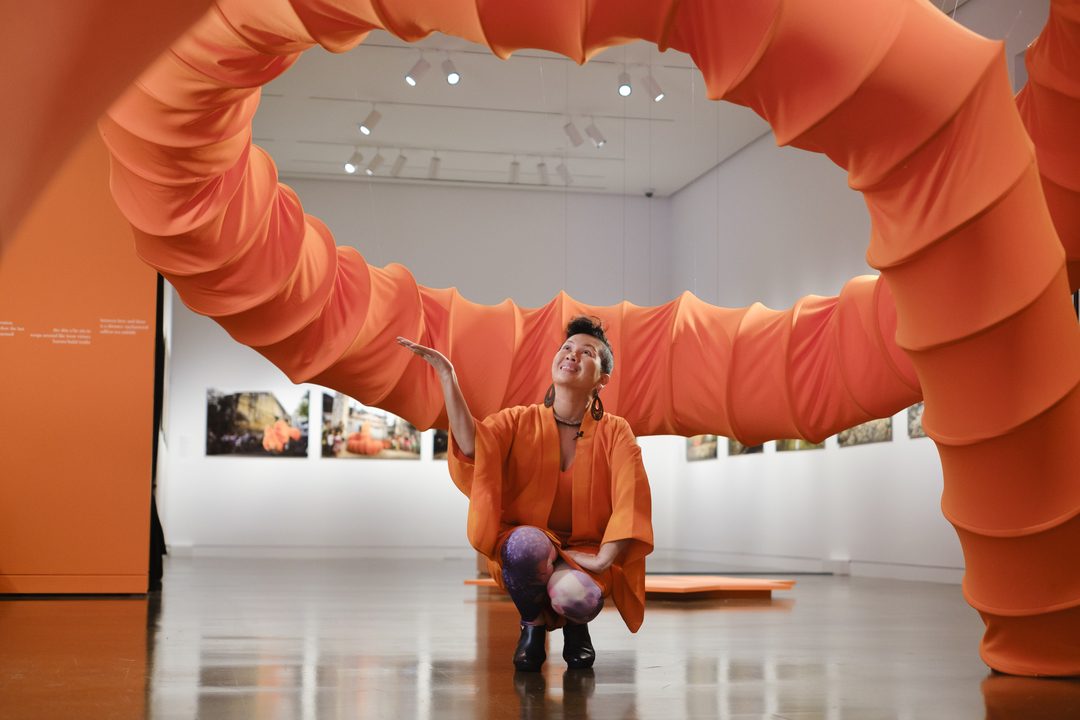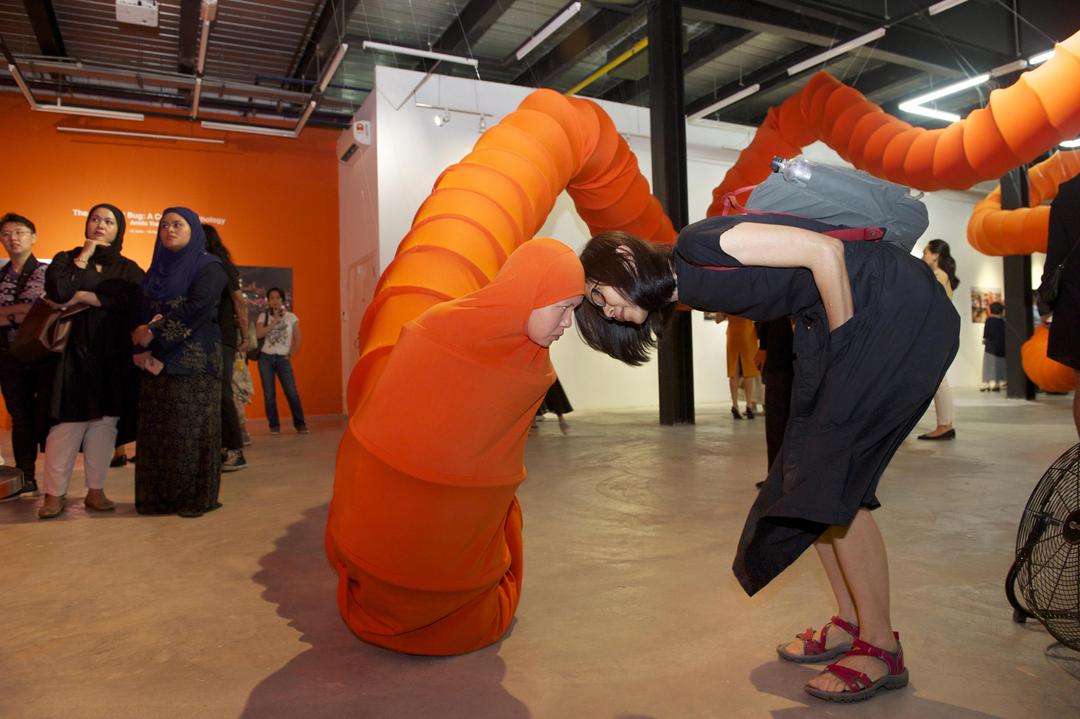Muse/News: Peaceful Gestures, Art Response, and Ancient Labels
SAM News
Tune in: Anida Yoeu Ali was interviewed by Gregory Scruggs of Monocle Radio about her performance works now on view in Hybrid Skin, Mythical Presence at the Seattle Asian Art Museum. (Tip: Her segment starts about 31 minutes into the show.) You can see her as The Red Chador alongside her rainbow brigade on Saturday, June 1 across all three SAM sites!
“My gestures are the heart shake…and then sometimes I just bow to them as the Red Chador, just completely humble myself and offer a bow…that is always very well received and it sort of disarms a moment, too, when they see that I’m offering you a moment of reverence and a peaceful gesture.”
Margo Vansynghel of The Seattle Times was inspired by the aurora borealis to find more open-air beauty, including at the Olympic Sculpture Park: “Where to see free, outdoor art in the Seattle area in spring 2024.”
“The installation is a stunning illustration of Serra’s belief that sculpture wasn’t meant to be passively viewed but felt by moving through it. Here, let the undulating steel waves, at once tender and imposing, wash over you.”
Summer season is upon us: For Fodor’s, Sydney Baker has “The Perfect 5-Day Seattle Itinerary”; Baker recommends CityPASS for all your attraction needs, including a downtown day that includes the Seattle Art Museum. And Amanda Teague for The Manual has “4 reasons why Seattle is Kayak’s No. 1 summer travel destination,” including a shout-out for SAM.
Local News
The skies also inspired Cascade PBS’s Brangien Davis, who found “Northwest artists channel Northern lights in galleries from Ballard to Pioneer Square.”
Via Jenn Ngeth for South Seattle Emerald: “Events Bloom All Over Seattle to Celebrate AA&NH/PI Heritage Month 2024.”
Via Nova Berger for Capitol Hill Seattle Blog: “Capitol Hill resident and poet Janée Baugher has received the Dorset Prize.”
“Museums changed that for Baugher. She writes in a literary style known as Ekphrastic poetry: a poetic response to the emotions a piece of art brings. Using language as a tool to bridge the visual and the verbal, allowing the poet to capture their response to the artwork in a way we can all understand.”
Inter/National News
Don’t miss this full celebratory series of the greatest short story writer ever via The New York Times: “Alice Munro, Nobel Laureate and Master of the Short Story, Dies at 92.”
Via Artdaily: “Gagosian opens the gallery’s first exhibition of works by Lauren Halsey.” The artist had her solo show at SAM in 2022 in honor of her 2021 Gwendolyn Knight and Jacob Lawrence Prize.
For the ones who read the labels: Richard Whiddington for Artnet on English archaeologist Leonard Woolley’s excavation of the ancient Mesopotamian city of Ur and what he found in 1925.
“The clue that indicated that Woolley had uncovered a Neo-Babylonian museum was the presence of artifact labels. Each object corresponded to a small clay cylinder that boasted inscriptions in four languages explaining the object, its context, and its history.”
And Finally
“A Few Words About That Ten-Million Dollar Serial Comma.”
– Rachel Eggers, SAM Associate Director of Public Relations
Photo: Alborz Kamalizad.
